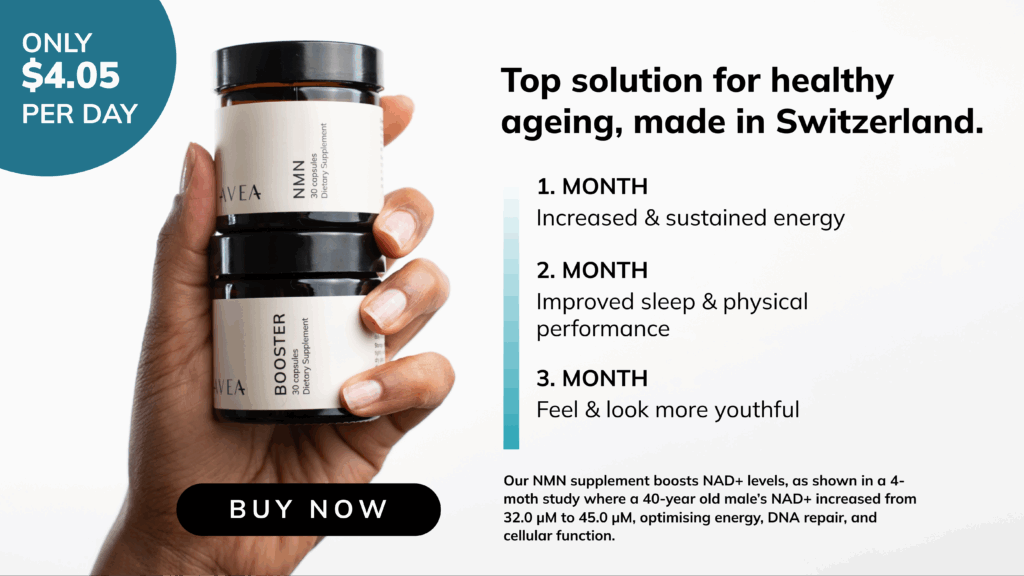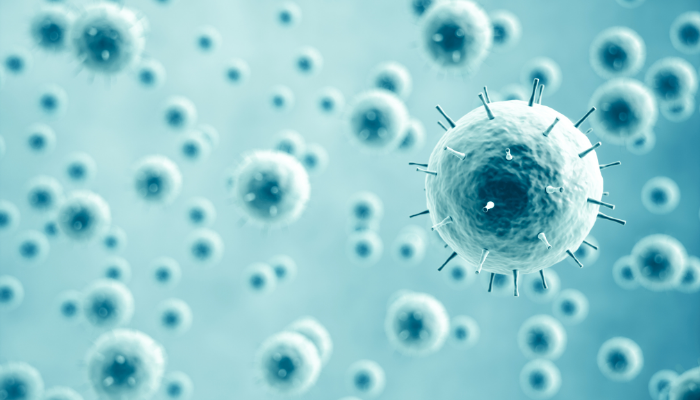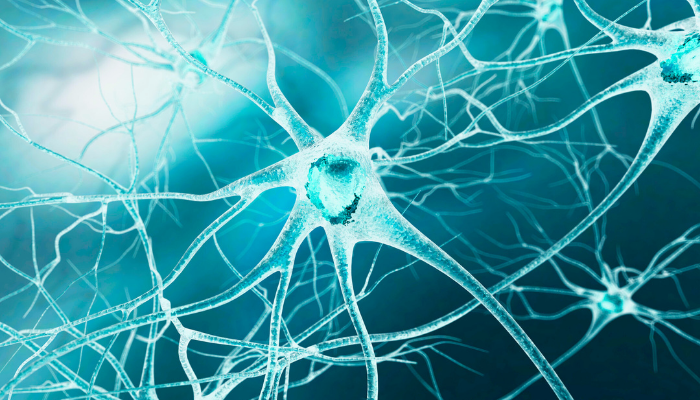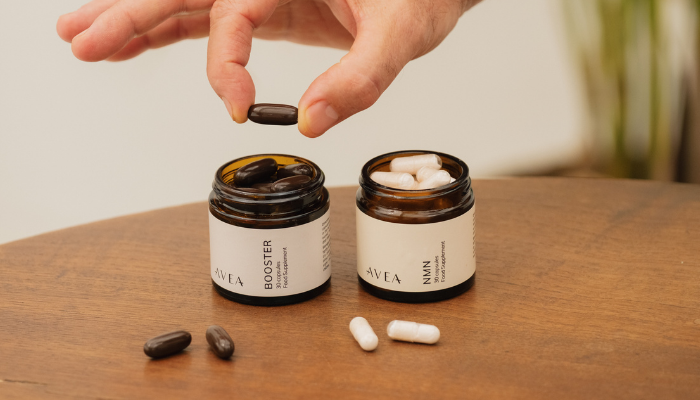NMN (Nicotinamide Mononucleotide) has become one of the most talked-about compounds in the longevity and wellness space. Backed by a growing body of scientific research, this molecule is praised for its potential to boost cellular energy, enhance physical and cognitive performance, and slow down age-related decline.
But what exactly is NMN and why is it considered a breakthrough in healthy aging?
To understand NMN’s role in the body, we first need to explore a molecule called NAD+ (Nicotinamide Adenine Dinucleotide), a critical coenzyme that powers your cells and keeps your metabolism, DNA repair, and energy production running smoothly.
In this article
What is NAD+?
NAD+ is a molecule found in every cell of your body. It plays a central role in hundreds of metabolic processes, including:
- Converting nutrients into energy (cellular respiration)
- Repairing damaged DNA
- Regulating inflammation
- Supporting brain, muscle, and immune function
Think of NAD+ as the fuel for your cellular engines. It activates key enzymes like sirtuins and PARPs, which help protect your cells from stress, support repair mechanisms, and maintain your body’s resilience over time.
However, there’s one major issue: NAD+ levels decline sharply with age. By age 50, your NAD+ levels may be half of what they were at 20. This drop is linked to many age-related symptoms, including fatigue, slower recovery, reduced focus, and visible signs of aging.
You can live with low NAD+ but your cells won’t function at their best. The longer NAD+ stays depleted, the faster the aging process unfolds.
As NAD+ decreases, so does your body’s ability to perform efficiently.
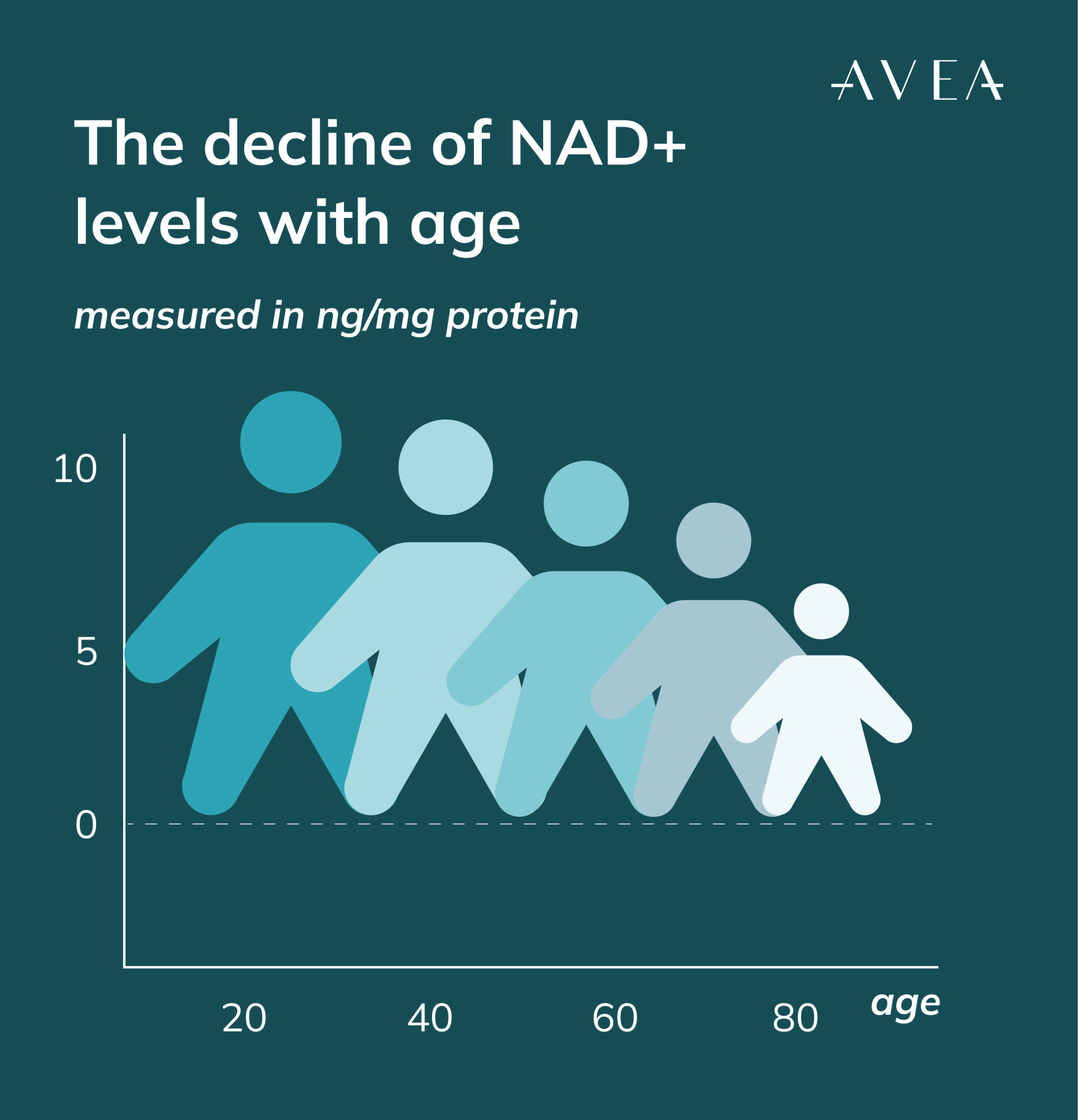
Signs of low NAD+ levels
As NAD+ levels decline—a natural part of aging—your cells begin to struggle with energy production, repair, and communication. The result? A cascade of subtle but impactful symptoms that can affect your daily life, long before any medical condition is diagnosed.
Here are the most common signs your NAD+ levels may be too low:
1. Fatigue and low energy
One of the earliest and most noticeable symptoms of NAD+ depletion is constant tiredness. NAD+ is essential for mitochondrial function—the process that converts nutrients into ATP, your body’s main energy currency. When NAD+ is low, mitochondria can’t perform efficiently, leading to cellular energy shortfalls. You may feel physically and mentally drained even after resting or sleeping well.
2. Brain fog and difficulty concentrating
Your brain is one of the most metabolically active organs in the body, requiring a steady flow of NAD+ to function. Low NAD+ can impair neurotransmitter activity and reduce the brain’s ability to repair itself, leading to symptoms like mental fog, forgetfulness, difficulty focusing, and slower information processing.
3. Reduced endurance, stamina, and muscle strength
Muscle cells rely heavily on NAD+ to meet the high energy demands of physical activity. When levels drop, your muscles fatigue more quickly, and post-workout recovery becomes slower and more painful. You may notice a gradual decline in your workout performance, reduced motivation to exercise, and more soreness after even moderate exertion.
4. Slower recovery from physical stress or injury
NAD+ is crucial for activating DNA repair enzymes and cellular defense pathways. When NAD+ is depleted, your body’s ability to heal is compromised. This shows up as longer recovery times after exercise, lingering inflammation, and a greater risk of chronic pain or injury from minor strains.
5. Poor sleep quality and disrupted circadian rhythm
NAD+ helps regulate the expression of clock genes that control your circadian rhythm—the internal timer that governs your sleep-wake cycle. When NAD+ is low, melatonin production may be impaired, making it harder to fall asleep or stay asleep. You may also experience unrefreshing sleep or irregular energy patterns throughout the day.
6. Weakened immune resilience
Your immune system requires NAD+ to function efficiently, particularly when facing stress, infection, or inflammation. Low NAD+ levels can reduce the activity of immune cells like macrophages and T-cells, leaving your body more vulnerable to illness, slower to recover from infections, and prone to chronic low-grade inflammation.
7. Premature signs of aging, especially in the skin
NAD+ supports healthy cell turnover, collagen maintenance, and DNA repair. A decline in NAD+ contributes to visible signs of aging such as wrinkles, sagging, dullness, and loss of elasticity. These outward signs are reflections of deeper cellular changes affecting tissues throughout the body—not just skin.
The good news: NAD+ can be restored
Research shows that many of these effects can be slowed—or in some cases, reversed—by restoring NAD+ to optimal levels. Boosting NAD+ improves how your cells generate energy, repair damage, and communicate across tissues.
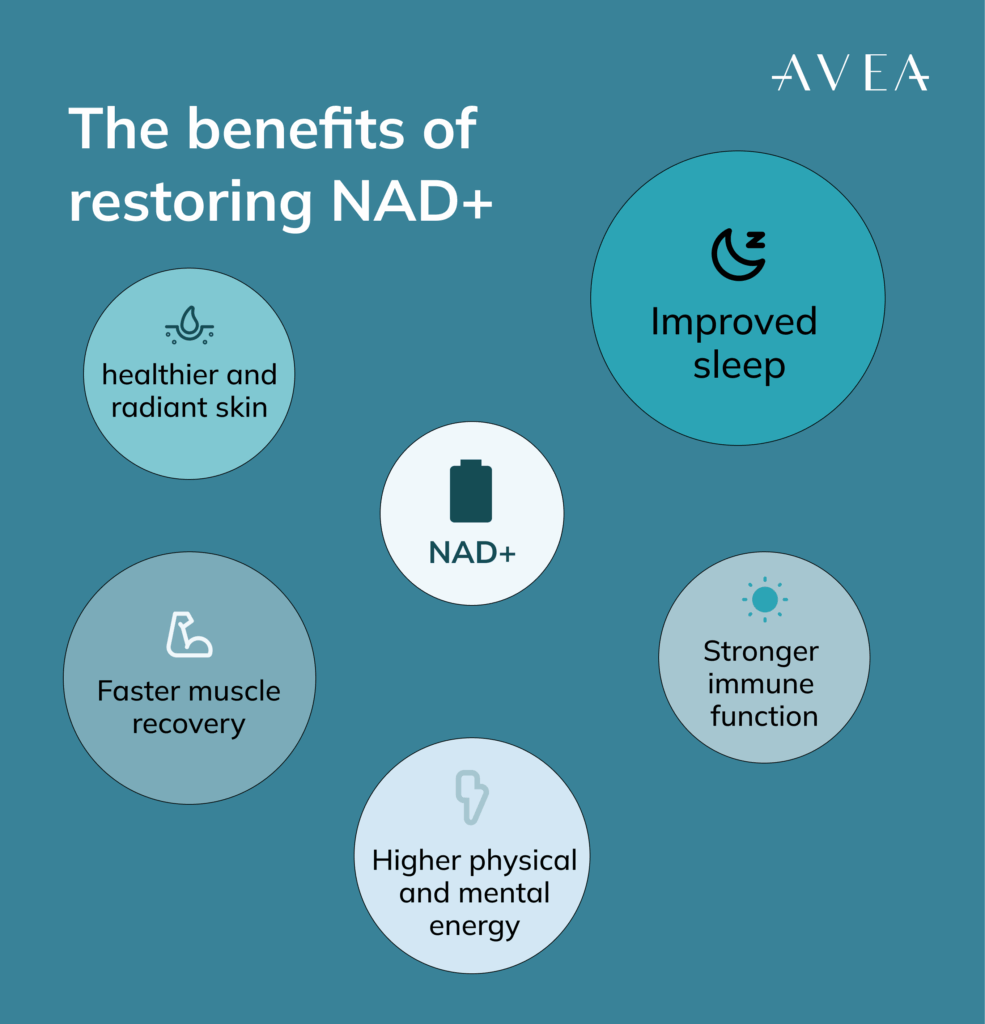
The benefits of restoring NAD+ include:
- Higher physical and mental energy
- Faster muscle recovery and reduced inflammation
- Improved sleep quality and circadian rhythm regulation
- Stronger immune function and resilience
- Healthier, firmer, more radiant skin
NAD+ isn’t just a marker of age, it’s a driver of how well your body functions. Supporting it is a proactive step toward aging better, feeling better, and performing at your best.
Can I take NAD+ supplements to boost NAD+ levels?
You might assume that taking NAD+ directly as a supplement would be the simplest solution. But here’s the catch: NAD+ is not bioavailable in its raw form—meaning your body can’t absorb and use it effectively when taken orally. Its large molecular structure prevents it from crossing cell membranes efficiently, so most of it is broken down before it reaches the bloodstream.
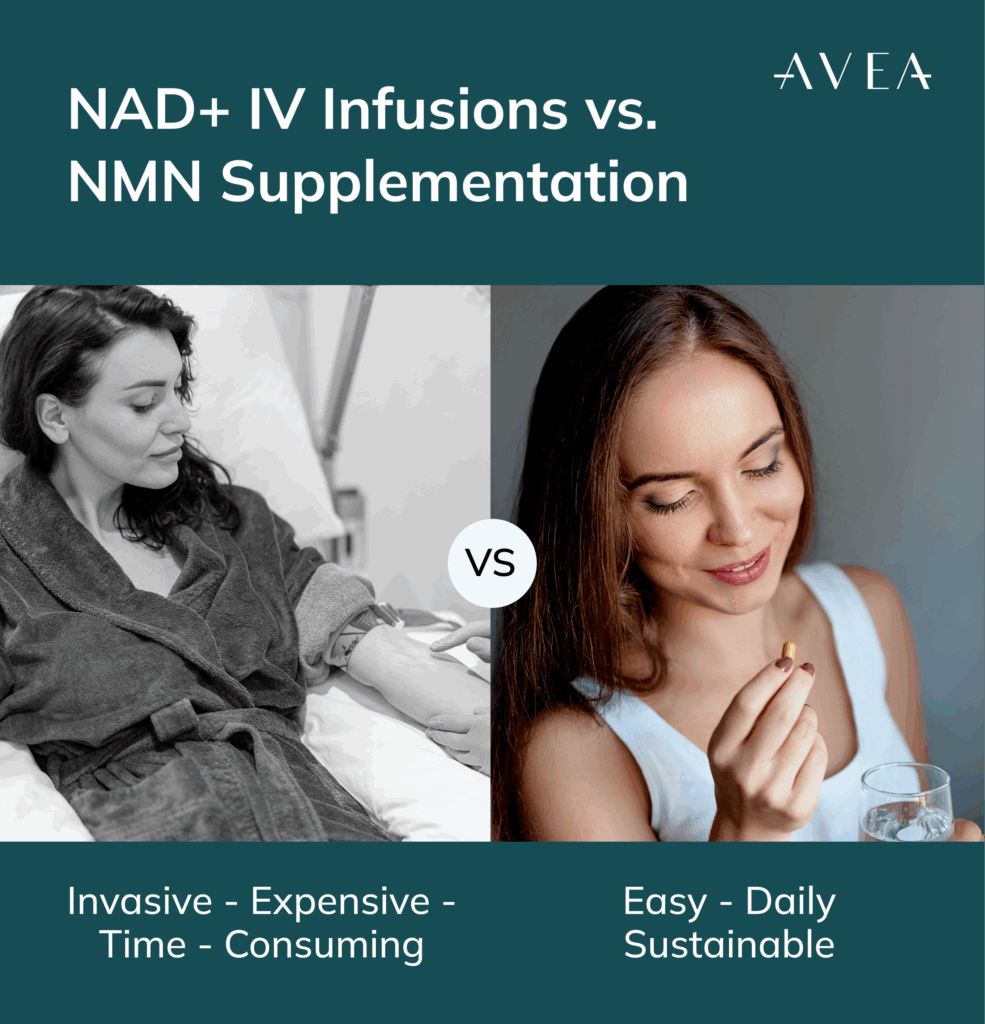
Some clinics offer NAD+ IV infusions as an alternative, but these come with notable downsides:
- The process can be uncomfortable, often causing nausea, muscle cramps, and sensitivity to light and sound.
- Infusions typically take hours, require medical supervision, and must be scheduled monthly.
- They’re expensive, time-consuming, and impractical for daily or long-term use.
Learn more about NAD+ injections vs NAD+ Supplement here
The better approach: NAD+ precursors
Fortunately, researchers have identified compounds that act as precursors to NAD+, molecules your body naturally converts into NAD+ through enzymatic reactions. Two of the most studied and effective are:
- NMN (Nicotinamide Mononucleotide)
- NR (Nicotinamide Riboside)
NMN vs NR, which works better?
NMN (Nicotinamide Mononucleotide) and NR (Nicotinamide Riboside) are two of the most studied NAD+ precursors — compounds your body converts into NAD+ to fuel vital cellular processes. Both are naturally present in small amounts in foods like broccoli, edamame, and avocado, and both belong to the vitamin B3 family.
While they share a common goal—boosting NAD+ levels—their structure and efficiency differ.
What is NMN?
NMN is made up of three parts: nicotinamide (vitamin B3), a ribose sugar, and a phosphate group. This structure puts NMN one step away from NAD+, meaning your cells can convert it directly into NAD+ without extra processing.
Because of this, NMN is often described as the immediate precursor to NAD+—positioned further down the biosynthetic chain and ready for rapid use.
What is NR?
NR, also derived from nicotinamide and ribose, must first be converted into NMN before it can become NAD+. In other words, NR is a precursor to NMN, which is then converted into NAD+ through enzymatic pathways.
Here’s a simplified breakdown:
- NR → NMN → NAD+
- NMN → NAD+

Which one is better?
Both NR and NMN have been shown to increase NAD+ levels in humans, but recent research suggests that NMN may have superior bioavailability, especially in tissues like muscle and liver where energy production is critical. Because NMN bypasses an extra conversion step, it’s considered by many scientists and health experts to be the more efficient choice.
In fact, the body already naturally prefers NMN during NAD+ synthesis—several NAD+ salvage pathways use NMN as the final building block before NAD+ is formed.
NMN in longevity science
NMN has gained particular traction in the scientific community due to its promising effects in preclinical and early human studies. It’s being actively studied for its potential to improve metabolism, cardiovascular function, muscle endurance, cognitive health, and biological age.
Renowned researchers such as Dr. David Sinclair (Harvard Medical School) and Dr. Shin-ichiro Imai (Washington University School of Medicine) have highlighted NMN’s potential in aging research. While both compounds are valuable, NMN is increasingly seen as the front-runner in next-generation longevity supplementation.
AVEA’s NMN
NMN is a derivative of vitamin B3 and a direct precursor to NAD+, playing a key role in cellular energy and repair. While NMN does occur naturally in foods like edamame, broccoli, cucumber, and cabbage, the amounts are minimal—typically between 0.25 and 1.88 mg per 100 g. To reach effective levels, especially as NAD+ declines with age, supplementation becomes essential.
But not all NMN supplements are created equal.
Independent tests have shown that many NMN products on the market are impure, mislabeled, or contain little to no actual NMN. That’s where AVEA sets a higher standard.
What makes AVEA NMN different?
- Longevir™ NMN — a clinically studied, highly stable form of NMN produced in Europe
- 100% traceable and clean — free from additives, fillers, or unknown substances
- Third-party tested in Switzerland — every batch is independently verified for purity and potency
- Formulated for efficacy — designed to support NAD+ restoration and long-term cellular health
We believe trust begins with transparency. That’s why each AVEA NMN supplement is rigorously tested, so you know exactly what you’re putting in your body—and why it works.
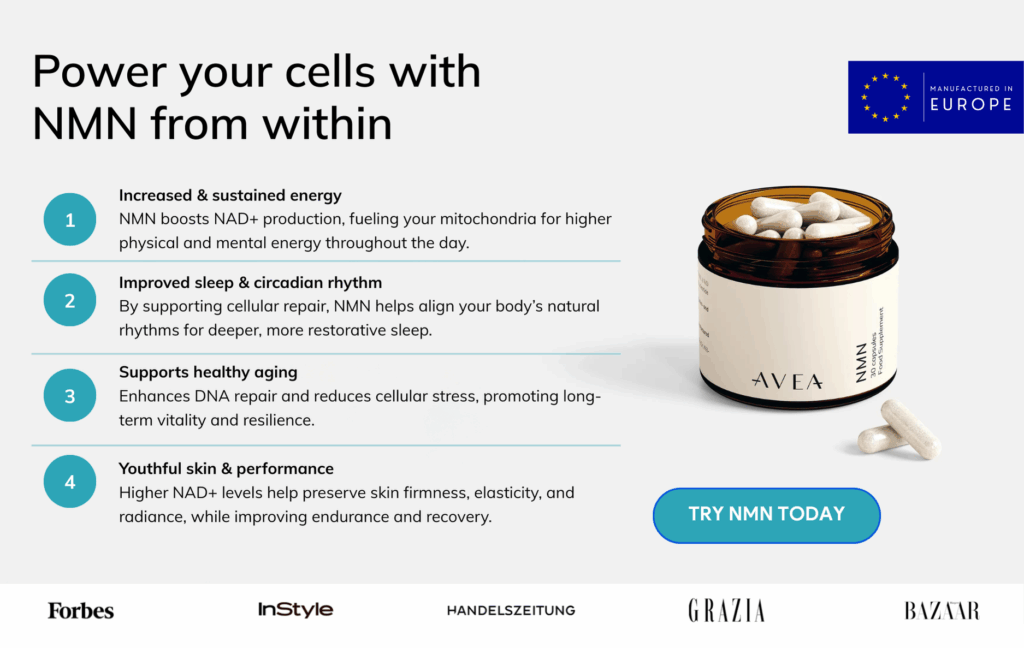
What are the benefits of NMN?
Many preclinical studies show how NMN is rapidly converted into NAD+ upon ingestion. Once absorbed, NMN elevates blood NAD+ levels in essential tissues like the heart, liver, muscles, kidneys, and even the brain.
NAD+ plays a critical role in mitochondrial function, driving ATP production – the cell’s main energy source. It also activates sirtuins, proteins that regulate DNA repair, inflammation, and stress responses, promoting cellular health and longevity.
While more clinical research is ongoing, existing human studies already point to a range of measurable benefits from supplementing with NMN to increase NAD⁺ levels:
- Significantly increased overall energy levels, reduced fatigue
- Stronger physical performance and faster recovery²
- Enhanced muscle function and increased aerobic capacity²
- Improved sleep quality
- Improved insulin signaling & muscle insulin sensitivity
- Increased female fertility
- Reduce age-related weight gain
By restoring NAD⁺, NMN helps support cellular energy, improve metabolic function, and enhance the body’s ability to repair and regenerate—making it a powerful tool in healthy aging.
Maximise the impact of NMN by upgrading to AVEA Vitality Bundle
While NMN forms the foundation for restoring NAD⁺ levels, research shows that taking a multi-targeted approach can significantly enhance its benefits. To truly support NAD⁺ metabolism, your body needs more than just production—it also needs protection, efficient usage, and recycling.
A complete strategy for NAD⁺ optimisation includes:
- Boosting NAD⁺ production
- Preventing NAD⁺ depletion
- Enhancing the NAD⁺ recycling cycle
That’s exactly why we created the AVEA Vitality Bundle—a powerful duo that combines our clinically tested NMN with the Booster, a targeted formula designed to support every angle of NAD⁺ metabolism.
Our Booster contains six potent antioxidants, each working in synergy with NMN to provide the best solution for boosting NAD+ levels.
- Resveratrol and Pterostilbene activate longevity proteins called sirtuins, ensuring NAD+ is used efficiently for key processes and not wasted.
- CoQ10 improves mitochondrial function and reduces oxidative stress. This protects cells from damage that would otherwise deplete NAD+.
- Apigenin inhibits CD38, an enzyme that accelerates NAD+ depletion, especially as you age. Lower CD38 activity preserves NAD+ for vital processes.
- Betaine, a methyl donor, supports the recycling of NAD+ by providing the resources your body needs to keep NAD+ levels steady, even during stress.
- Nicotinamide provides the raw materials needed to recycle and produce NAD+. This ensures a consistent supply of NAD+ required for energy and repair.
The Vitality Bundle allows you to target multiple pathways of NAD+ metabolism, promoting energy, cellular repair, and long term overall health.
Real results: Increasing NAD+ levels with AVEA Vitality Bundle
What happens when you stop taking AVEA’s NMN and Booster and what changes when you start again?
AVEA’s CSO, Sophie Chabloz, put it to the test. After a month without supplementation, she resumed taking the Vitality Bundle and tracked her NAD+ levels for eight weeks using an at-home dried blood spot test to measure its impact on energy, immunity, and resilience.
Key results:
- Baseline (No supplementation): NAD+ levels at baseline were 15.4 µM, coinciding with lower energy, weaker immunity, and tired mornings.
- 250mg NMN + Booster (Weeks 1-4): NAD+ levels rose to 20.4 µM, energy improved, and waking up felt easier again.
- 500mg NMN + Booster (Weeks 5-8): with double dose of the Vitality Bundle, NAD+ peaked at 35.2 µM, leading to sharper focus, better recovery, and sustained resilience during high-demand periods.
Higher NAD+ levels correlated with noticeable improvements in energy, mental clarity, and immune support—validating the powerful effects of AVEA’s Vitality Bundle.
AVEA NMN and Booster (Vitality Bundle) Experience
After asking customers about the benefits they perceived after 3 months of taking the Vitality Bundle, the results speak for themselves.
After 12 weeks, out of 450 participants:
- 80% reported improved energy and focus.
- 76% noticed a boost in overall wellbeing.
- 77% experienced enhanced mood and emotional balance.
“I have been taking NMN for 3 weeks now and have to say that I definitely have more energy towards the end of the day and also sleep more deeply. I am curious and look forward to what will happen with longer use.” – Christiane L.
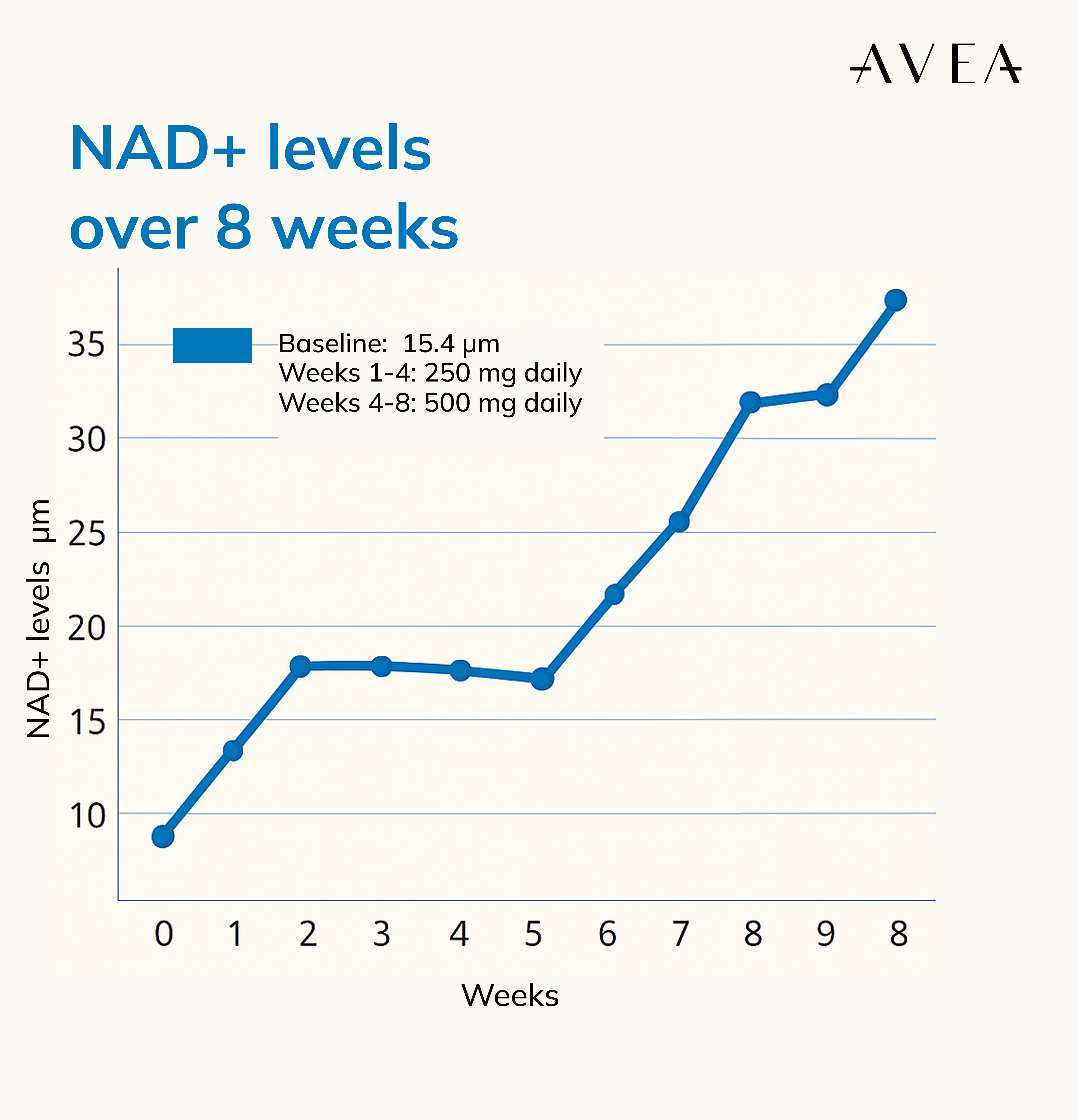
Find out more real experience with AVEA NMN and Booster (AVEA Vitality Bundle) here
How to choose the best NMN such as AVEA supplement?
When choosing an NMN supplement, here are a few things to keep in mind:
1. Purity of NMN
A recent study revealed most NMN supplements on the market contain far less, or none of the NMN claimed on their labels, with deviations ranging from -100% to +28.6%. In fact, a 2021 study revealed that more than 50% of products tested contained no NMN at all.
Transparency is central to our values at AVEA. Each batch of our NMN is independently tested in a Swiss laboratory, ensuring over 99% purity, giving you supplements that deliver results and prioritise your safety.
2. Reputable manufacturer
The supplement industry is poorly regulated, and many products come from substandard factories, risking contamination or shorter shelf life. Here’s why AVEA’s NMN stands apart:
1. GMP-Certified production: Manufactured and encapsulated in Europe under GMP-certified facilities inspected by government authorities.
2. Trusted source: We use the trademarked NMN from Longevir, a Dutch company renowned for its extensive research into safety and shelf stability.
3. Rigorous testing: Every batch is independently tested in a Swiss lab for heavy metals and toxins, ensuring purity and safety.
3. Combo with synergistic supplements
While supplementing with NMN alone already boosts NAD+ levels, you can achieve much better results by targeting NAD+ level increase and maintenance with multiple approaches can deliver even better results. For example, using antioxidants to reduce oxidative degradation of NAD+ increases the NAD+ level your body can actually retain over time and can make your NMN supplementation more effective.
AVEA’s proprietary Booster complements NMN with a unique blend of six potent potent and Antioxidants. Resveratrol, Ubiquinol CoQ10, Pterostilbene, Apigenin, Betaine, Nicotinamide) to target cellular ageing and optimise NAD+ production. Enhanced with olive oil for improved absorption—even without food—it’s designed to work synergistically with NMN for maximum impact.
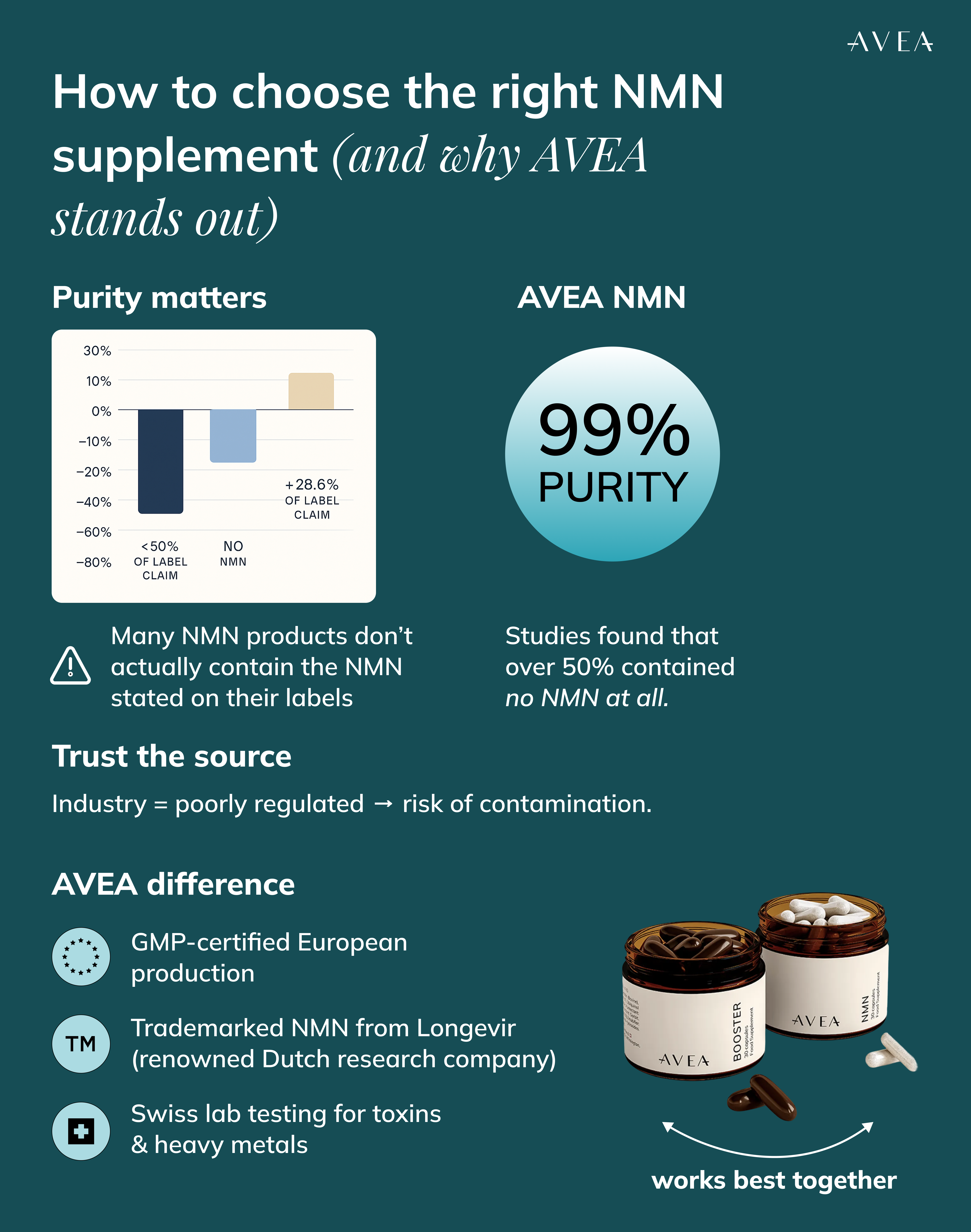
Does NMN have side effects?
Based on current research, NMN is considered safe and well-tolerated, with no significant side effects reported in either animal studies or early human trials.
Preclinical data show that even high doses of NMN are non-toxic in animals. In long-term studies, mice given daily NMN for up to a year showed no adverse effects. Similarly, early human trials have found NMN to be well-tolerated, even at relatively high single doses, with no serious side effects reported.
As with any supplement, some caution is advised in specific populations.
A note on medical conditions
The effects of NMN in individuals with serious health conditions—such as cancer—have not yet been thoroughly studied. Since NAD⁺ supports cellular growth and repair pathways, and these can also be active in cancer cells, experts recommend caution in these cases.
If you have active cancer, a history of cancer, or a precancerous condition, it’s best to avoid NMN supplementation unless advised by your physician. When in doubt, always consult a qualified healthcare provider—especially if managing complex conditions or taking prescription medications.
How much NMN should I take?
Most clinical research suggests that 250 mg to 500 mg of NMN per day is effective for supporting energy levels, muscle function, and metabolic health. This dosage range has been shown to safely increase NAD⁺ levels and improve key aging markers in early human studies.
At AVEA, we recommend starting with one capsule (250 mg) per day. This dose is both safe and beneficial, based on the latest scientific findings and expert consensus.
What makes AVEA’s NMN formula unique?
Our NMN supplement is formulated by longevity researchers and designed for purity, performance, and long-term trust. Every capsule is:
- Developed using insights from 500+ peer-reviewed studies
- Made with 99% pure NMN, using only natural stone-ground brown rice flour as a filler
- Third-party tested in Switzerland for purity, potency, and safety
- 100% vegan, non-GMO, and free from unnecessary additives
- Clinically verified to raise NAD+ levels through biomarker testing
- Designed to deliver synergistic effects when paired with AVEA’s Booster
The bottom line: Support your NAD+, support your longevity
NAD+ is more than a buzzword, it’s a cellular cornerstone that influences how you age, feel, and perform. As levels naturally decline with age, symptoms like fatigue, slower recovery, brain fog, and visible aging begin to emerge. Fortunately, science now offers us the ability to counteract this decline.
NMN is one of the most promising tools to restore NAD+ levels, with research supporting its ability to enhance energy, muscle function, metabolism, and even skin health. But as you’ve learned, taking a holistic approach is key.
That’s why the AVEA Vitality Bundle, featuring our highly stable NMN and powerful Booster, is designed to do more than just raise NAD⁺. It protects it, recycles it, and maximises your body’s ability to thrive at the cellular level.
Whether you’re seeking more energy, deeper sleep, or long-term health optimisation, supporting your NAD+ is a smart and proactive step toward healthy aging. And with AVEA, you’re doing it with trusted, rigorously tested ingredients that work in harmony with your body.
